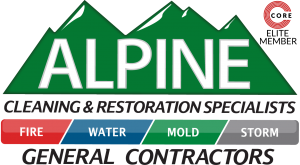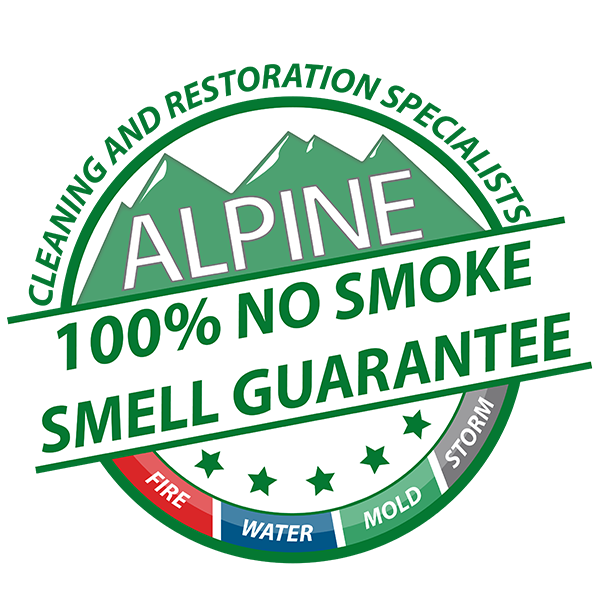5 Common Causes of Bathroom Flooding
Bathroom Flooding
Bathroom flooding is a fairly common problem. It should come as no surprise, since the bathroom is the place where homes use the most water. With so many pipes going into and out of any bathroom, the potential for flooding is very high. Take a recent client of ours, for example:
Hard Water In The Shower
 Cache Valley has a hard water problem. Hard water is water that has large amounts of lime, chalk, and/or gypsum in it. It’s not pleasant. Some people are allergic to it, it has an odd taste, and it builds up mineral deposits. That last part gives it a lot of potential to cause floods in a way you might not expect.
Cache Valley has a hard water problem. Hard water is water that has large amounts of lime, chalk, and/or gypsum in it. It’s not pleasant. Some people are allergic to it, it has an odd taste, and it builds up mineral deposits. That last part gives it a lot of potential to cause floods in a way you might not expect.
A recent client of ours noticed a leak in their shower faucet. They didn’t think too much of it at first because if they turned the faucet just a certain way it stopped leaking inside the shower. The problem was the leak wasn’t actually visible. A cartridge in the shower valve had build-ups of mineral deposits from the hard water, causing it to leak behind the walls. Because they didn’t see the leak, they thought it was fine . . . until water started seeping through the walls onto the bathroom floor.
Serious Damage, Serious Repair Job
This was not a simple fix by the time we got to it. Because it took such a long time for them to notice the water leaking out from inside the walls, it had been sitting for a long time. A lot of wood was soaked and warped and the drywall was completely ruined. All that needed to be replaced, meaning we had to take out most of the shower wall and rebuild part of the bathroom.
The lesson to be learned is this: if something is leaking, it’s a sign of a problem. If you see anything in your bathroom leaking water, even if it looks like you can do something to stop it, you should have it looked at. If we’d checked the leak when it was first noticed, there would have been a lot less water damage to repair.
Common Causes of Bathroom Flooding
Leaks are the most obvious warning sign that you’re at risk of bathroom flooding; however, not every cause of bathroom flooding will have visible leaks. If you see a leak, you should have it checked out right away, but you should also watch out for other signs. Here are some of the more common causes of bathroom floods.
1. Clogs
By far the most common one, clogs happen when something gets in the pipes and prevents water from draining properly. The most common place for pipes to clog is the toilet. While some toilets might advertise themselves as being strong enough to flush golf balls, this doesn’t mean they can’t be clogged. In fact, golf balls would be easier to flush in demonstrations because golf balls don’t get sticky when wet, as toilet paper does. If you attempt to flush too much toilet paper, no matter how good your toilet is, it will clog up. It might appear to flush just fine the first time, but the next time you flush, it will just keep filling the bowl until it overflows.
Toilet paper isn’t the only problem. There’s a number of products that market themselves as “flushable wipes.” While they will technically flush, they don’t break up like toilet paper eventually does, and instead build up in the sewer pipes until they become nasty clogs that take a lot of money and effort to remove. Even particularly large masses of feces can clog a toilet in some cases.
The best way to prevent this is to be conservative with your toilet paper use and do not attempt to flush anything other than human waste and small amounts of toilet paper at one time. You should also keep a toilet plunger next to your toilet at all times. Using your plunger when you first spot the problem can clear the clog before the bowl has a chance to overflow.
2. Malfunctions
Sometimes, the parts of your plumbing can malfunction. A more common example is the toilet float. This device is used to measure the amount of water in the tank. It uses a buoyant ball in the tank to activate a lever that shuts off the flow of water when the tank fills. Various things can cause this to stop working effectively. The mechanical parts can wear out, causing the lever to not fully close the valve. The float itself can get bent, causing it to read the tank as full before it actually fills. Any number of other problems can also happen. The end result is that when you flush, your toilet never stops trying to refill.
If the problem is small, it can cause your toilet to keep dripping a little water into the bowl, which drains slowly. It won’t flood, but it will run up your water bill. In more serious cases, the valve doesn’t close at all and it keeps trying to fill the tank and bowl and eventually overflows. Usually, you’ll notice the toilet continuing to trickle small amounts of water before it gets bad enough to overflow, however. As long as you pay attention and have it checked out as soon as you spot this problem, you can avoid a flood.
3. Leaks
There are all kinds of ways things can start to leak. The hard water example from our recent client is one. Fixtures like faucets can also get loosened, causing water to seep out. Gaskets in sinks and toilets will naturally harden as they age, causing them to crack and leak water. There are so many ways leaks can start that there’s no way I could possibly list them all. These leaks usually start small, but are fairly noticeable. It’ll usually start with a little water on the floor, or around the sink’s edges, but it’s very clear. This isn’t enough to cause serious damage if you catch it quickly. Ignored for too long, however, the leak gets worse and the water builds up.
Leaks are always a sign of something in the plumbing going wrong. As we’ve already said, you should never ignore them. Even if it looks like the leak has stopped itself, it may be continuing to leak somewhere you can’t see it. Be sure to check under sinks as well. Plumbing is often hidden inside cabinets, which are easy to forget about. Look in on them every few months or so to make sure they aren’t leaking.
4. Burst Pipes
This is the worst cause of bathroom flooding, though not the most common. When it gets cold, water freezes. We all understand this basic fact of nature, but when water freezes, it expands. Expansion can cause pipes to burst. When that happens, lots of water will spill out all over the home – not just the bathrooms, but wherever the water can flow to from the burst point. Since there are a lot of pipes in the bathroom, though, you’ll see burst pipes happen a lot in bathrooms.
Fortunately, there are some ways to avoid this. Properly insulating your pipes is a good first step. Keeping the pipes from getting cold will keep them from freezing. Another good way to prevent pipes from bursting is to leave a faucet running just a trickle on cold nights. While it won’t always stop the pipes from freezing, the flow relieves a lot of pressure inside the pipes. This reducies the chances they’ll burst if it does freeze. Finally, if your plumbing is very old, it can be a good idea to have your pipes checked out to make sure they’re in good condition. Like everything else, pipes wear out as they age and that natural wear makes them more vulnerable to breaking.
Here in Cache Valley, the cold winters make burst pipes a common risk. Fortunately, modern houses are built with good insulation, so the risk is much less reduced. That said, even well insulated pipes can freeze if the temperature drop is sharp enough. There are usually two or three nights a winter in Cache Valley where we get such serious temperature drops. It’s always a good idea to keep up on the weather forecast and remember to let your pipes have a bit of a trickle when a cold snap is coming. Better safe than sorry.
5. Negligence
This is the embarrassing one. You start running a bath, but then the phone rings, or someone’s at the door, or something pulls your attention away. Without thinking, you go to take care of it, but leave the water running. The bathtub fills up and spills over. Maybe one of your young kids started running water just for amusement and didn’t turn it off (kids do things like this all the time). Perhaps you left the water running on the sink because you didn’t think there’d be a problem if you were only gone a moment, but ran it faster than it could drain.
Accidents happen and these kinds of accidents cause flooding. You need to be careful! Always make sure that you stop any running water before you leave the bathroom (or any room where you run water). This is the easiest way to avoid this cause of flooding.
What To Do About Bathroom Flooding

Don’t ignore problems, or they could lead to more damage . . . and more costly repairs!
What you should do in case of a bathroom flood can depend on how serious the flood is. For bigger floods, we have an article on safety steps to follow. For smaller floods, if the water isn’t contaminated (toilet water), you might be able to wipe it up quickly enough that there’s not a problem.
Either way, fast action is important. Water causes more damage the longer it sits. If the flood is bigger than you can clean up with a few paper towels in a few minutes, you should call us right away, especially if you can’t stop the source of the flood without turning off a main water line. We have a team ready to act in case of such emergencies as this. Our people will get in quickly with our specialized tools to drain the water, dry your house out, and find/repair the source of the flooding before it can do too much damage to your home.
If you’re having flooding problems, don’t delay in getting in touch with us. If it’s a serious flood, call our nearest office. Even if it seems like a small leak that shouldn’t worry you, contact us so we can take a look. Remember, small leaks are usually signs of big trouble in the future!





